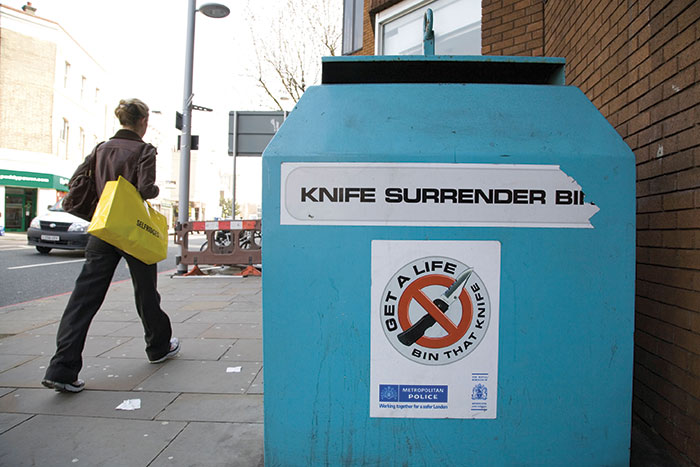
The horrific spate of UK knife crime has put greater focus on policing and its resources than for several years. Is the drop in police numbers to blame? How many officers do we need? How much will this cost? Is the £14bn in the 2019-20 funding settlement enough?
But when it comes to police budgets, I believe we are asking the wrong questions.
The mission of policing has become cloudy. For decades, the Peelian principles of preventing crime and disorder held firm. For home secretary Theresa May our mission was to cut crime – “nothing more, nothing less”. However, for all forces, the aim is to maintain security and keep communities safe, extending their duty way beyond crime.
The reality is that 20% of our business involves responding to mental health issues, and we deal with 300,000 missing persons reports every year.
This is further compounded by austerity. Policing used to be the last line of defence – a crime is happening, come quickly. Now, however, it is arguably the agency of first request, as other services’ capacity has shrunk, providing a social service around the clock, yet it is not resourced to be everything to all people.
Then when the funding stream for policing is divided, differing forces of power play out. We need clarity on what is policed nationally, regionally and locally, and how the funding is divided thematically and geographically.
I recognise that we can’t compartmentalise everything, but greater clarity may help the tensions between local demand and resourcing and funding national commitments. Police and crime commissioners were voted locally to deliver locally: should we not relieve them of the regional and national pressures of funding and resourcing?
Extraordinarily, the structure of policing has barely changed in over half a century. The 43-force model, despite brave attempts to collaborate, is no longer fit for purpose.
The inconsistency of power relationships over time will cost the public purse in the long term. It may already have slowed the response to new internet-enabled crimes, which know no geographic boundaries and amount to millions of offences each year. Each has a victim behind it.
And, of course, we must not forget policing’s most important asset: our people. Around 80% of police budgets are spent on staff, which is one reason why cuts have landed so brutally. We have asked more and more of them, and they’ve willingly responded; but cracks are showing as they strain under demand.
Where funding is provided for key problems – such as the £100m for knife crime announced in the Spring Statement – the service is just asking more from its current staff. This is not a long-term response to long-term issues. It is the same officers, working more and more hours, having rest days and leave cancelled in order to plug the gap from the loss of 21,000 colleagues.
These officers would like to see their families, have a day off, decompress. These same officers now have no say in their pay and conditions and can only watch each year as the recommendations of the independent pay review process are overridden.
The questions we should be asking are what do the public, and government, want our police to do – and not do? What is the right way for this to be delivered? Unless we answer these, we will never get police funding right.
We urgently need a major, independent review of policing. One that can lift policing out of the shortsighted cycle of annual funding announcements and sporadic spending review decisions, and empower it with the ability to properly plan, resource and deliver the things that society needs, now and in the future.
Read a PF’s analysis here on the effects of cuts on police forces.




















